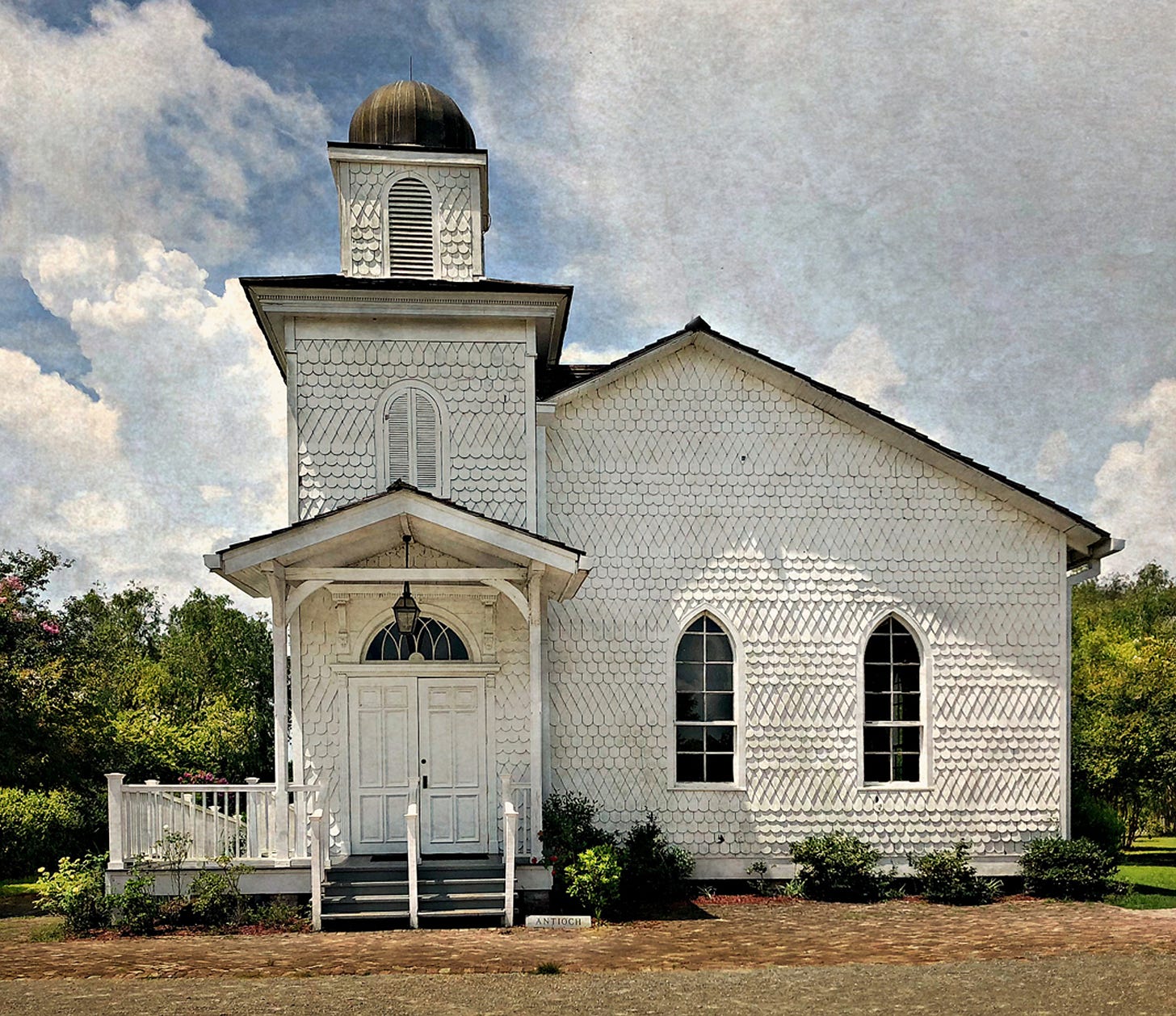There is a very hopeful update on the story from last week about little Brevard’s Chapel in North Carolina. The church conference has graciously granted a 90-day pause in their plans in order for preservationists to come in and render a second opinion. I will keep you posted with updates as they unfold. In the meantime, the story of a small church in Louisiana brings evidence of how these places can become living examples of history.
Whitney Plantation on Louisiana’s River Road extended a quiet greeting on a beautiful day in June a few years back that has yet to let me go.
The dome of a little church pulled me in. I could see it just beyond the fence, reaching above the tops of the trees. Walking inside the welcome center with a bit of hesitation, I asked if it might be possible to pay full price but skip the regular tour and just dip inside for a few exterior shots. The day was getting away from me, so maybe the young man behind the counter could read my desperation, or maybe he treated all of Whitney’s visitors with the same kindness, but whatever the case, he said, “Wait here. Let me go get our manager and we’ll see what we can work out.” In less than a minute, Adina Oubre emerged from the back with a smile that lit up the room. Not only did she graciously open Whitney’s doors, she offered one of her employees and a golf cart so that I could make the most of my few short minutes. And that is how Qua Oates, a gorgeous young African American woman and I ended up on a journey through Whitney, the memory of which still brings me to tears.
The house at Whitney was built in 1803, a Creole raised-style structure that is one of the most important examples of this architectural style in a state filled with such. It remained in the same family until 1867. Thanks, however, to New Orleans attorney John Cummings, Whitney has recently stepped into a much more significant role. Through the efforts of Mr. Cummings, who spent fifteen years and eight million dollars of his own money, Whitney Plantation is a museum devoted to the story of slavery. The story of the main house was the least of it. The people on whose backs it was built were the ones being honored in this place.
Antioch Baptist Church was moved to Whitney from nearby Paulina, Louisiana during the Cummings restoration. It was founded by former slaves in 1868 as a communal burial society. Members would contribute nickels and dimes, and in return, the church would take care of their funeral and burial expenses. With God’s blessing on their “loaves and fishes”, they made the best of what they had and took care of their own.
Great architecture has its place in our history, and so does the true story of those whose struggles made it possible. This humble church on the grounds of a great plantation in Louisiana is a fitting reminder of that truth.
Photo by Beth Yarbrough.






It is the little white churches that seem more sacred than the enormous ones we have. I attended a little white church for many years, but then they built a huge, modern one that they really could not afford. And at any rate, I left for college the year they did that and never felt it was my home church again.
Will we see pictures of the other structures?